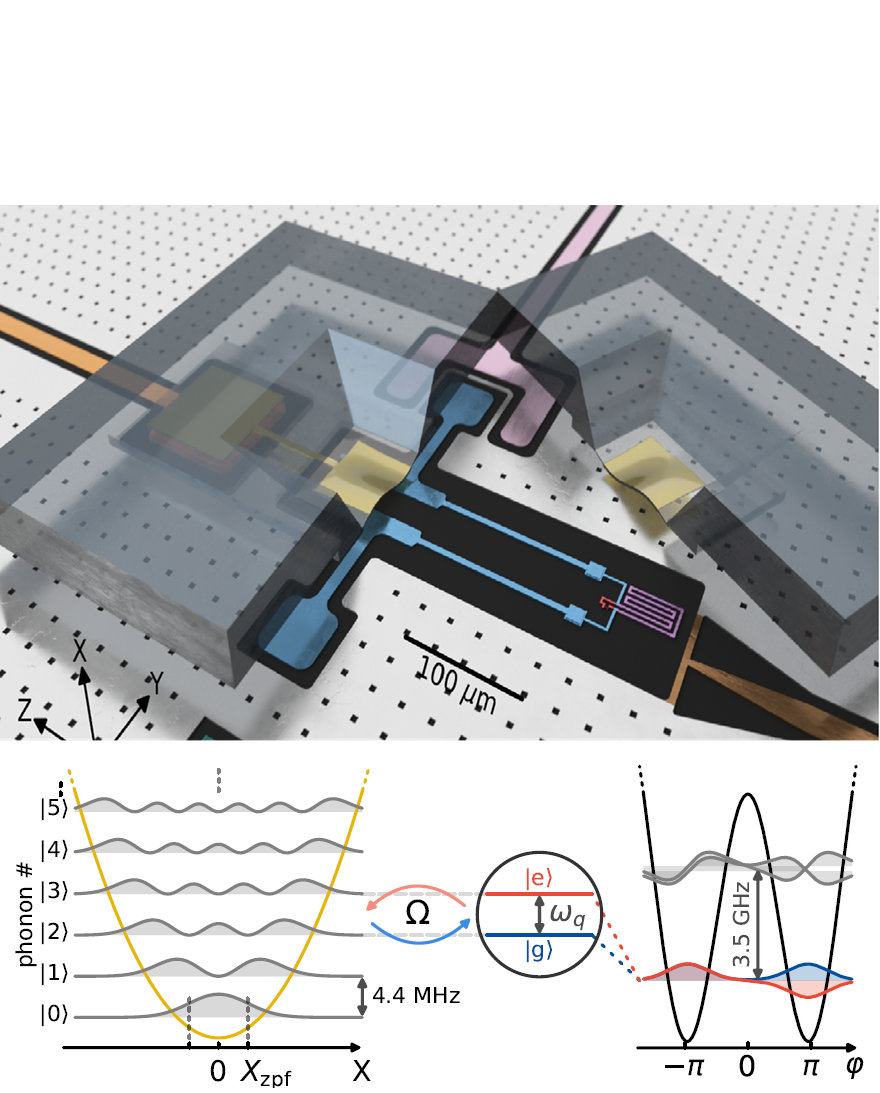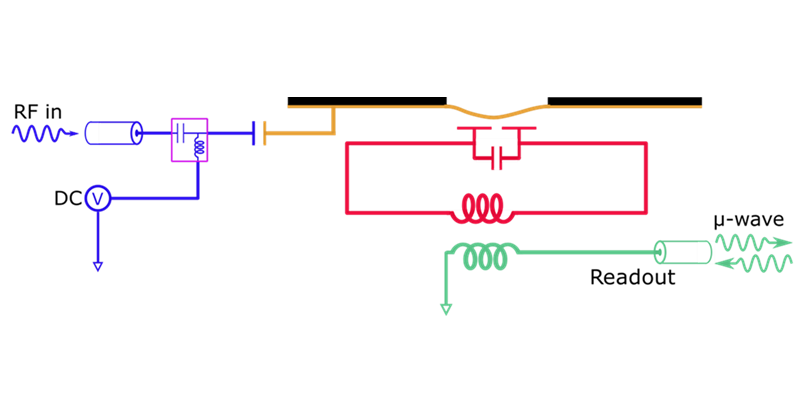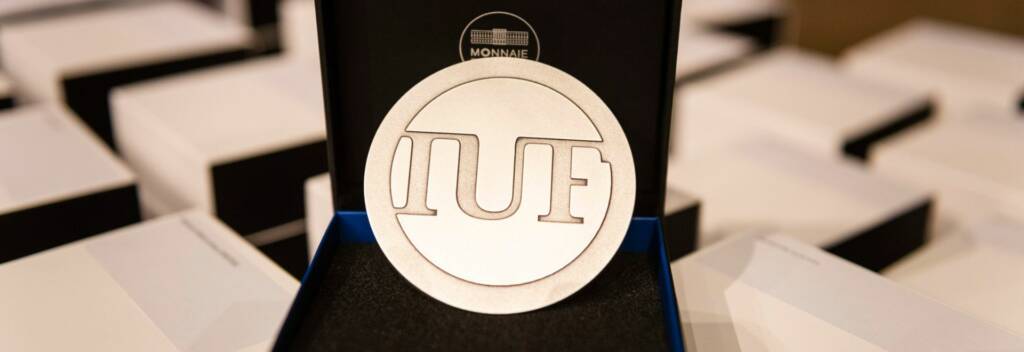Resonant coupling between a superconducting qubit and a macroscopic membrane
The Superconducting circuits and mechanical resonators team has demonstrated resonant coupling between a superconducting qubit and a macroscopic membrane oscillating at a few MHz. They track its quantum motion with ~300 repeated interactions. They demonstrate back-action and probe non-commuting operators.

We resonantly couple a superconducting qubit to a macroscopic membrane oscillating at a few MHz. ~300 repeated interactions let us track its quantum motion, observe back-action & probe non-commuting operators. Mechanical oscillators are promising platforms for probing quantum mechanics at macroscopic scales—but coupling them strongly and coherently to a well-controlled quantum system has been a longstanding challenge. Our solution: a heavy-fluxonium qubit with a MHz-range transition, long coherence, and fast reset. This architecture enables resonant, repeatable interactions with a 4 MHz vibrating SiN membrane, sustained over its 6 ms lifetime. We perform a sequence of stroboscopic weak measurements: after each qubit–membrane interaction, we read out the qubit in a single shot. From this, we reconstruct the membrane’s motion spectrum—phonon by phonon. The data reveals thermal noise (nth ≈ 47 at 10 mK), plus clear signatures of qubit-induced back-action. By preparing the qubit in |g⟩ or |e⟩, we selectively probe the absorption (n) or emission (n+1) spectrum. This imbalance directly reflects the non-commutativity of the mechanical creation and annihilation operators. A subtle but fundamental quantum effect—now visible through repeated coupling to a genuine two-level system. Crucially, our system is massive enough (~5 ng) and coherent enough (~0.3 ms) that it approaches the regime where gravitational decoherence, as proposed by Diósi and Penrose, would become observable (t_G ~ 0.5 ms). This is a first step toward probing quantum gravity with mechanical systems. Many exciting directions ahead: stronger coupling and longer coherence time would enable ground state cooling and cat-state preparation using our qubit as a quantum controller.
The preprint can be found on ArxiV: https://arxiv.org/abs/2505.21481
This work is a collaboration with LPENS Quantic, CEA Quantronics, and Alice & Bob. It was supported by ANR: MecaFlux (ANR-21-CE47-0011), Ferbo (ANR-23-CE47-0004), and RobustSuperQ (ANR-22-PETQ-0003). This work has also been supported by Region Île-de-France in the framework of DIM Sirteq (project CryoParis) and DIM QuanTiP (project COCONUT), and by Sorbonne Université through the HyQuTech “Emergence” program. It was also funded by the Quantum Information Center Sorbonne (QICS doctoral fellowship), and by the CNRS–University of Arizona joint Ph.D. program.
Read also
Cryogenic rf-to-microwave transducer based on a dc-biased electromechanical system
The Superconducting circuits and mechanical resonators team demonstrates a modular sensitive cryogenic rf-to-microwave transducer based on a dc-biased electromechanical system.
Thibaut Jacqmin – appointed IUF member
Thibaut Jacqmin has been appointed Junior Member of the Institut Universitaire de France (IUF), Fundamental Chair
Pushing the limits of superinductors with vertically‑stacked Josephson junctions
The Superconducting circuits and mechanical resonators team has demonstrated new designs of high-impedance hyper-inductors. We open a scalable path to high impedance hyperinductors for exotic protected qubits.



